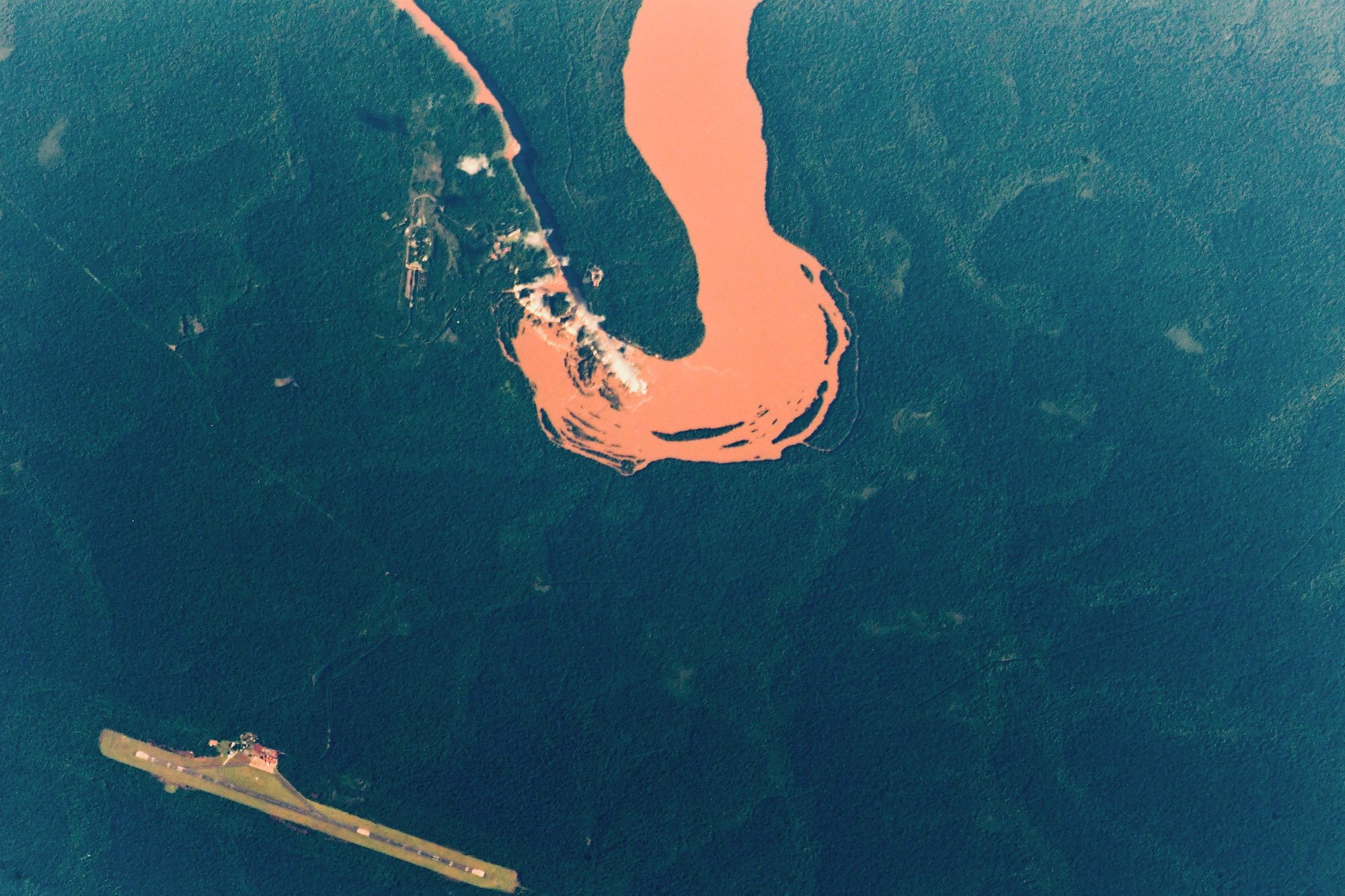[:ja]アントン・シュカプレロフ宇宙飛行士がISSから撮影した南米アルゼンチンとブラジルにまたがるユネスコ世界遺産のイグアスの滝です。

イグアスの滝は、南米大陸のアルゼンチン(80%)とブラジル(20%)の二国にまたがる世界最大の滝で、最大の瀑布である「悪魔の喉笛(Garganta del Diablo)」は高さ82m、幅150mのU字型で長さ700mです。パラナ川との合流点より23㎞上流のイグアス川にあり、季節で変化する水量により150から300の瀑布が出現します。
地上の様子はこちらです。

参考文献: Anton Shkaplerov’s Tweet
ウェブ地球儀で地球俯瞰画像を見る: LiVEARTH
[Earthview Wonders] No.450: Iguazu Falls🇦🇷🇧🇷
Astronaut Anton Shkaplerov captured from ISS the UNESCO’s World Heritage, the Iguazu Falls on the border of Argentina and Brazil.

The Iguazu Falls are the largest waterfalls system in the world. Numerous islands along the 2.7km-long edge divide the falls into many separate waterfalls and cataracts, varying 60-82m high. The number of these smaller waterfalls fluctuates from 150 to 300, depending on the water level of the season. About half of the river’s flow falls into a long and narrow chasm called the Devil’s Throat (Garganta del Diablo in Spanish).
The local scenery on the ground is as follows.

Reference: Anton Shkaplerov’s Tweet
See earthview photo gallery with web-globe: LiVEARTH[:en][Earthview Wonders] No.450: Iguazu Falls🇦🇷🇧🇷
Astronaut Anton Shkaplerov captured from ISS the UNESCO’s World Heritage, the Iguazu Falls on the border of Argentina and Brazil.

The Iguazu Falls are the largest waterfalls system in the world. Numerous islands along the 2.7km-long edge divide the falls into many separate waterfalls and cataracts, varying 60-82m high. The number of these smaller waterfalls fluctuates from 150 to 300, depending on the water level of the season. About half of the river’s flow falls into a long and narrow chasm called the Devil’s Throat (Garganta del Diablo in Spanish).
The local scenery on the ground is as follows.

Reference: Anton Shkaplerov’s Tweet
See earthview photo gallery with web-globe: LiVEARTH[:]